Various Wikipedia articles:
World Government |
Citizens for Global Solutions" (CGS) |
Democratic World Federalists (DWF) |
One World Trust (OWT) |
Union of European Federalists (UEF) |
World Federalist Movement (WFM) |
World Federalist Movement of Japan (WFMJ).
Click here for list of 13 WFM Member Organizations and 14 WFM Affiliated Organizations.
Click here for the Esperanto movement. | Click here for the United Nations.
Right click image to enlarge.
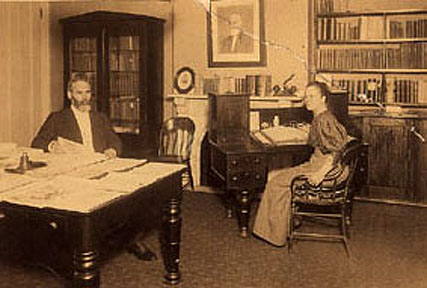
 | B
O
O
K
| 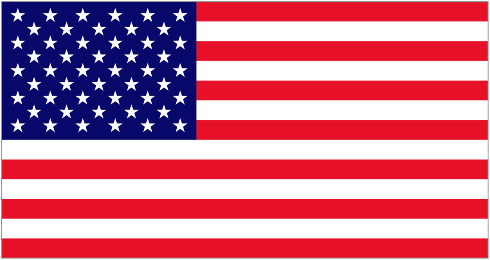  1897 or 1899 - "The Federation of the World" is published by Benjamin Franklin Trueblood [1847-1916]. A Quaker, Trueblood was educated at Earlham College in Richmond, Indiana (AB 1869 & AM 1875), and at the State University of Iowa (LLD 1890). He was president of Wilmington College in Wilmington, Ohio (1874-1879), president of Penn College in Oskaloosa, Iowa (1879-1890), and general secretary of the American Peace Society in Boston & Washington (1892-1915). Click here for more photos of Trueblood. 1897 or 1899 - "The Federation of the World" is published by Benjamin Franklin Trueblood [1847-1916]. A Quaker, Trueblood was educated at Earlham College in Richmond, Indiana (AB 1869 & AM 1875), and at the State University of Iowa (LLD 1890). He was president of Wilmington College in Wilmington, Ohio (1874-1879), president of Penn College in Oskaloosa, Iowa (1879-1890), and general secretary of the American Peace Society in Boston & Washington (1892-1915). Click here for more photos of Trueblood.
|

|   December 14, 1910 - Carnegie Endowment for International Peace (CEIP), Washington, DC (USA).
Andrew Carnegie [1835-1919], "like other leading internationalists of his day, believed that war could be eliminated by stronger international laws and organizations." Carnegie charged trustees to use the Endowment to "hasten the abolition of international war, the foulest blot upon our civilization" and chose longtime adviser Elihu Root [1845-1937], Senator from New York and former Secretary of War and of State, to be its head. Awarded the Nobel Peace Prize in 1912, Root served as Endowment president until 1925. December 14, 1910 - Carnegie Endowment for International Peace (CEIP), Washington, DC (USA).
Andrew Carnegie [1835-1919], "like other leading internationalists of his day, believed that war could be eliminated by stronger international laws and organizations." Carnegie charged trustees to use the Endowment to "hasten the abolition of international war, the foulest blot upon our civilization" and chose longtime adviser Elihu Root [1845-1937], Senator from New York and former Secretary of War and of State, to be its head. Awarded the Nobel Peace Prize in 1912, Root served as Endowment president until 1925. 
|
 | 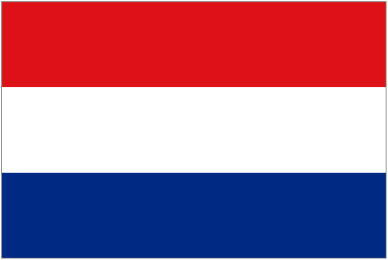 August 28, 1913 - Vredespaleis / Peace Palace, The Hague (Netherlands). Constructed and still owned by the Carnegie Foundation. Now home of the International Court of Justice (ICJ) or World Court, the Permanent Court of Arbitration (PCA), the Peace Palace Library, and the Hague Academy of International Law. August 28, 1913 - Vredespaleis / Peace Palace, The Hague (Netherlands). Constructed and still owned by the Carnegie Foundation. Now home of the International Court of Justice (ICJ) or World Court, the Permanent Court of Arbitration (PCA), the Peace Palace Library, and the Hague Academy of International Law.
|
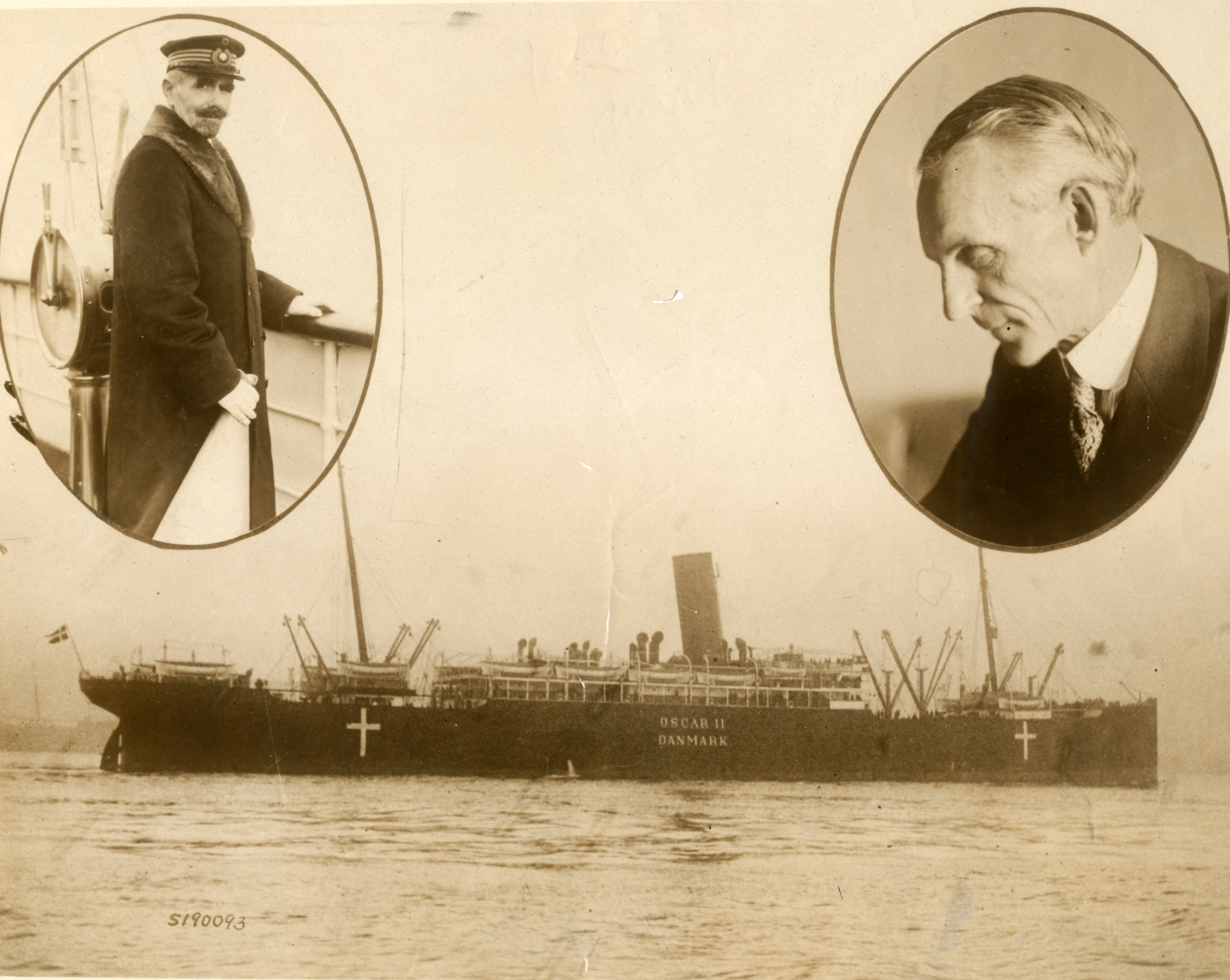


| S
H
IP |  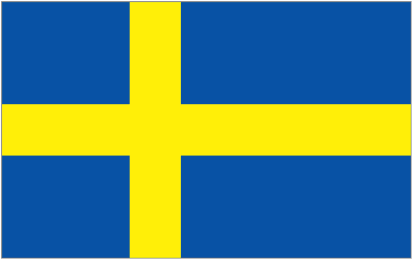 1915-1916 - Henry Ford's Peace Ship.
"On the outbreak of the First World War in Europe [in 1914], Henry Ford, the wealthy American businessman, soon made it clear he opposed the war and supported the decision of the Woman's Peace Party (WPP) to organize a peace conference in Holland. After the conference Ford was contacted by America's three [sic] leading anti-war campaigners, Jane Addams [1860-1935], Roswika Schwimmer [1877-1948], Oswald Garrison Villard [1872-1949], and Paul Kellogg [1879-1958]. They suggested that Ford should sponsor an international conference in Stockholm to discuss ways that the conflict could be brought to an end.
Ford came up with the idea of sending a boat of pacifists to Europe to see if they could negotiate an agreement that would end the war. He chartered the ship Oskar II, and it sailed from Hoboken, NJ, on December 4, 1915. The Ford Peace Ship reached Stockholm in January, 1916, and a conference was organized with representatives from Denmark, Holland, Norway, Sweden and the USA. However, unable to persuade representatives from the warring nations to take part, the conference was unable to negotiate an Armistice."
Upper images show the ship, its captain, Henry Ford [1863-1947] & Lola Maverick Lloyd [1875-1944] on board.
Bottom image is "Henry Ford's Peace Ship," a painting by Mary McCleary, Regent's Professor of Art Emeritus, Stephen F. Austin State University. 1915-1916 - Henry Ford's Peace Ship.
"On the outbreak of the First World War in Europe [in 1914], Henry Ford, the wealthy American businessman, soon made it clear he opposed the war and supported the decision of the Woman's Peace Party (WPP) to organize a peace conference in Holland. After the conference Ford was contacted by America's three [sic] leading anti-war campaigners, Jane Addams [1860-1935], Roswika Schwimmer [1877-1948], Oswald Garrison Villard [1872-1949], and Paul Kellogg [1879-1958]. They suggested that Ford should sponsor an international conference in Stockholm to discuss ways that the conflict could be brought to an end.
Ford came up with the idea of sending a boat of pacifists to Europe to see if they could negotiate an agreement that would end the war. He chartered the ship Oskar II, and it sailed from Hoboken, NJ, on December 4, 1915. The Ford Peace Ship reached Stockholm in January, 1916, and a conference was organized with representatives from Denmark, Holland, Norway, Sweden and the USA. However, unable to persuade representatives from the warring nations to take part, the conference was unable to negotiate an Armistice."
Upper images show the ship, its captain, Henry Ford [1863-1947] & Lola Maverick Lloyd [1875-1944] on board.
Bottom image is "Henry Ford's Peace Ship," a painting by Mary McCleary, Regent's Professor of Art Emeritus, Stephen F. Austin State University.
|
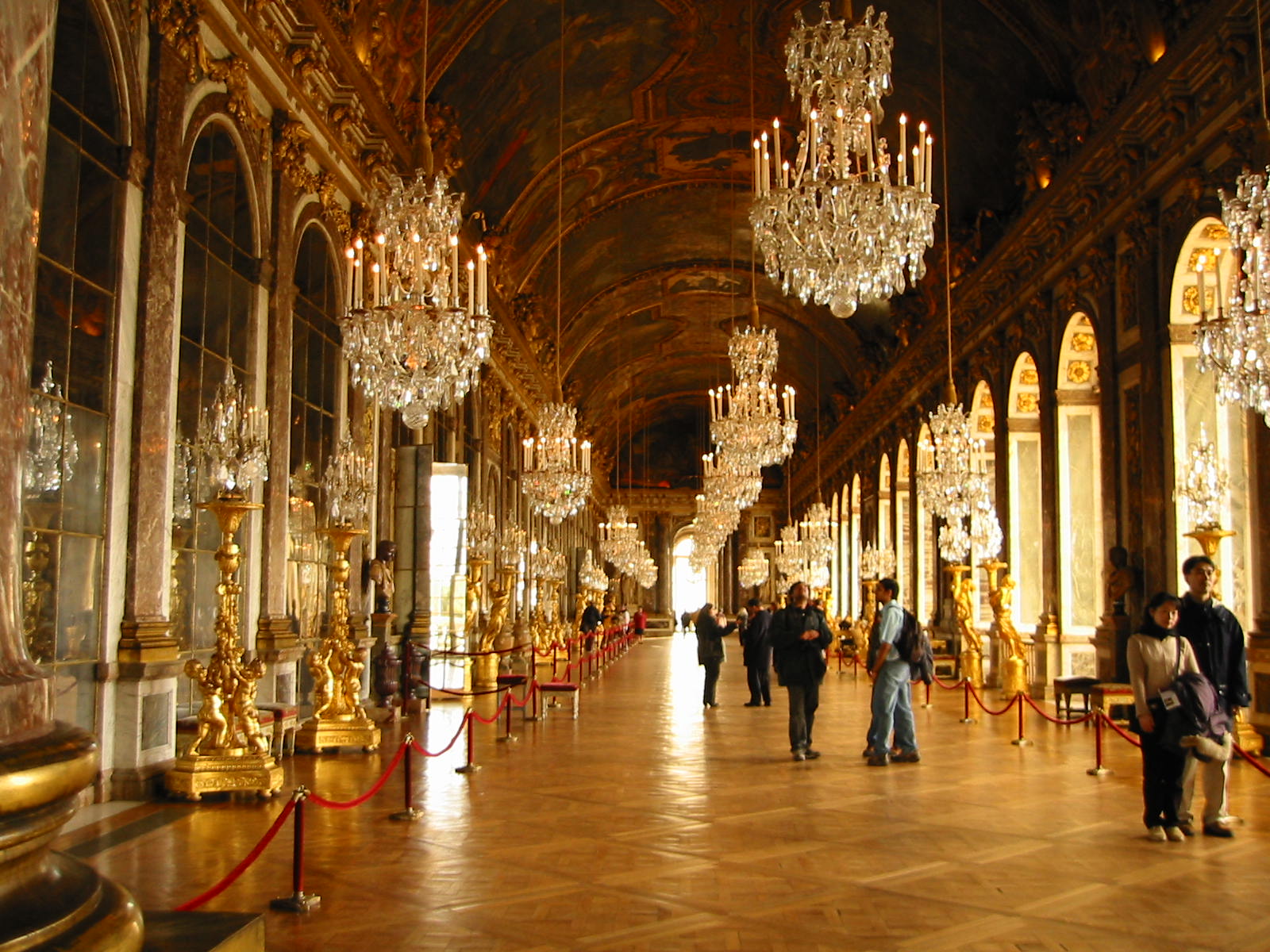

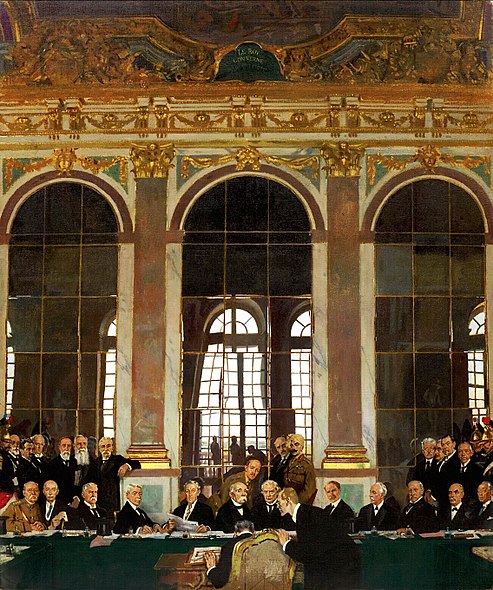
| H
A
L
L | 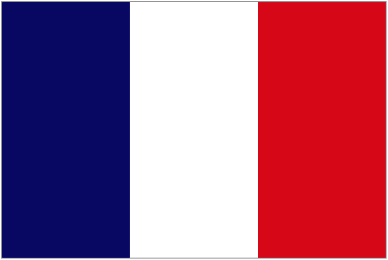 June 28, 1919 - Galerie des Glaces / Hall of Mirrors, Palace of Versailles, Versailles (France). This room was constructed by King Louis XIV in 1678-1684. It became a an "unintentional monument" with the signing of the Treaty of Versailles with Germany ending the World War I (1914–1918). June 28, 1919 - Galerie des Glaces / Hall of Mirrors, Palace of Versailles, Versailles (France). This room was constructed by King Louis XIV in 1678-1684. It became a an "unintentional monument" with the signing of the Treaty of Versailles with Germany ending the World War I (1914–1918).
| P
A
I
N
T
I
N
G |
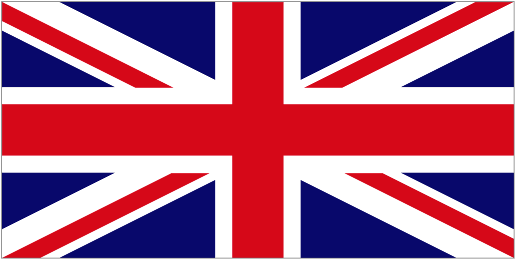 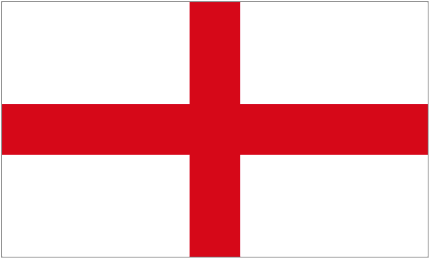 1919 - "Signing of Peace in the Hall of Mirrors,"
Imperial War Museum, London (England).
By Irish artist Sir William Orpen [1878- 1931]. Norman Stone (2009) says this "captured the political wrangling and vainglory of the gathered politicians and statesman whom Orpen came to loathe but increasingly relied upon for his post-war portrait commissions.
The peace-makers look extraordinarily pleased with them- selves as they pose for rather wooden immortaliation: silkiness of mous- tache, acuteness of gaze, dignity of stance. A Maharajah and a Japanese baron look on, evidence of the peace-makers' internationalism and benevolence. Clemenceau is said to have remrked that he was between a would-be Napoleon (Lloyd George) and a would-be Jesus Christ (Woodrow Wilson)... Far above the delegates reads the legend 'Le roy gouverne par lui même,' a pointed reference to their endless squabbling." 1919 - "Signing of Peace in the Hall of Mirrors,"
Imperial War Museum, London (England).
By Irish artist Sir William Orpen [1878- 1931]. Norman Stone (2009) says this "captured the political wrangling and vainglory of the gathered politicians and statesman whom Orpen came to loathe but increasingly relied upon for his post-war portrait commissions.
The peace-makers look extraordinarily pleased with them- selves as they pose for rather wooden immortaliation: silkiness of mous- tache, acuteness of gaze, dignity of stance. A Maharajah and a Japanese baron look on, evidence of the peace-makers' internationalism and benevolence. Clemenceau is said to have remrked that he was between a would-be Napoleon (Lloyd George) and a would-be Jesus Christ (Woodrow Wilson)... Far above the delegates reads the legend 'Le roy gouverne par lui même,' a pointed reference to their endless squabbling."
|
 

|  January 16, 1920 - League of Nations, Paris (France). First council meeting, six days after the Versailles Treaty came into force. In November 1920, the headquarters of the League will move to Geneva, where the first General Assembly will be held on November 15, 1920, with representatives from 41 nations in attendance. January 16, 1920 - League of Nations, Paris (France). First council meeting, six days after the Versailles Treaty came into force. In November 1920, the headquarters of the League will move to Geneva, where the first General Assembly will be held on November 15, 1920, with representatives from 41 nations in attendance. 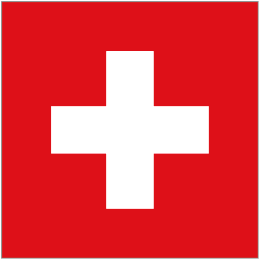
|

 | M
U
S
E
U
M
|   March 4, 1921 - Woodrow Wilson House Museum, National Trust for Historic Preservation, 2340 S Street, NW, Kalorama, Washington, DC (USA). "Only presidential museum in DC." Home of Woodrow Wilson [1856-1924] who was presdent 1913-1921. He received the Nobel Peace Prize in 1919 and died in this house on February 3, 1924. His widow Edith lived here until her death on December 28, 1961. She bequeathed the property & many of its furnishings to the National Trust. Inset shows celebration on Armistice Day, November 11, 1918. One of 27 US museums in "Museums for Peace Worldwide" edited by Kazuyo Yamane (2008). March 4, 1921 - Woodrow Wilson House Museum, National Trust for Historic Preservation, 2340 S Street, NW, Kalorama, Washington, DC (USA). "Only presidential museum in DC." Home of Woodrow Wilson [1856-1924] who was presdent 1913-1921. He received the Nobel Peace Prize in 1919 and died in this house on February 3, 1924. His widow Edith lived here until her death on December 28, 1961. She bequeathed the property & many of its furnishings to the National Trust. Inset shows celebration on Armistice Day, November 11, 1918. One of 27 US museums in "Museums for Peace Worldwide" edited by Kazuyo Yamane (2008). 
|
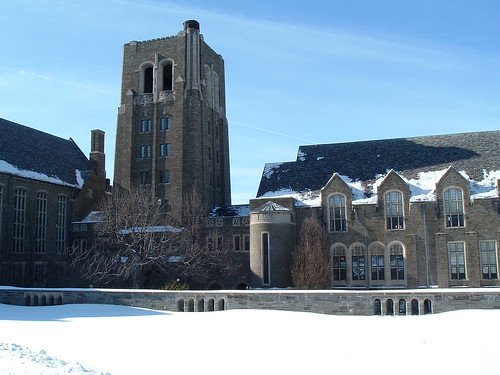
|   1932 - Peace Tower, Myron Taylor Hall, Law School, Cornell University, Ithaca, New York (USA). "Symbol of the post-World War I aspirations of Cornell's faculty – 'world peace through international law.'" Donated by Myron C. Taylor [1874-1959], Chairman of US Steel Corporation. 1932 - Peace Tower, Myron Taylor Hall, Law School, Cornell University, Ithaca, New York (USA). "Symbol of the post-World War I aspirations of Cornell's faculty – 'world peace through international law.'" Donated by Myron C. Taylor [1874-1959], Chairman of US Steel Corporation.
|



|  1937 -
"Chaos, War or a New World Order," a pamphlet by American Lola Maverick Lloyd [1875-1944] & Hungarian Rosika Schwimmer [1877-1948] says, "The Federation of Nations must be a democratic league controlled by direct representation of the peoples and not by governments and bureaucracies." The main lines of this blueprint were drawn up in 1924, revised and published in 1937 and again in 1942. According to John Ewbank (see below), Lloyd and Schwimmer deserved the Nobel Peace Prize for this work. 1937 -
"Chaos, War or a New World Order," a pamphlet by American Lola Maverick Lloyd [1875-1944] & Hungarian Rosika Schwimmer [1877-1948] says, "The Federation of Nations must be a democratic league controlled by direct representation of the peoples and not by governments and bureaucracies." The main lines of this blueprint were drawn up in 1924, revised and published in 1937 and again in 1942. According to John Ewbank (see below), Lloyd and Schwimmer deserved the Nobel Peace Prize for this work.
|


|  April 8, 1943 - "One World" published by Wendle L. Wilkie [1892-1944]. "Documents Wilkie's world travels and meetings with many of the then-Allied heads of state as well as ordinary citizens and soldiers in locales such as El Alamein, Russia, and Iran. Willkie also discusses the need for some sort of World government." April 8, 1943 - "One World" published by Wendle L. Wilkie [1892-1944]. "Documents Wilkie's world travels and meetings with many of the then-Allied heads of state as well as ordinary citizens and soldiers in locales such as El Alamein, Russia, and Iran. Willkie also discusses the need for some sort of World government."
|


|  1943-1968 - Dorothy Hewitt Hutchinson [l905-l984] began to gain influence in the peace movement when her pamphlet "A Call to Peace Now: A Message to the Society of Friends" was printed by the American Friends Service Committee (AFSC) in l943. That summer, Hutchinson and a small group of people started the Peace Now Movement, using her pamphlet to rally support for the principle of a negotiated settlement rather than unconditional surrender of the Axis powers. This group included George Wilfried Hartmann [1904-1955], a psychology professor at Columbia, & John Collett. Hutchinson also worked to promote the United Nations and helped organize a local chapter of the United World Federalists [UWF]. Hutchinson was active in the Women's International League for Peace & Freedom [WILPF] & became president of the US Section of WILPF in l96l, serving until l965. She then served as chairman of International WILPF from l965 until l968. Hutchinson was an activist in civil rights & civil liberties as well as in the peace movement.
1943-1968 - Dorothy Hewitt Hutchinson [l905-l984] began to gain influence in the peace movement when her pamphlet "A Call to Peace Now: A Message to the Society of Friends" was printed by the American Friends Service Committee (AFSC) in l943. That summer, Hutchinson and a small group of people started the Peace Now Movement, using her pamphlet to rally support for the principle of a negotiated settlement rather than unconditional surrender of the Axis powers. This group included George Wilfried Hartmann [1904-1955], a psychology professor at Columbia, & John Collett. Hutchinson also worked to promote the United Nations and helped organize a local chapter of the United World Federalists [UWF]. Hutchinson was active in the Women's International League for Peace & Freedom [WILPF] & became president of the US Section of WILPF in l96l, serving until l965. She then served as chairman of International WILPF from l965 until l968. Hutchinson was an activist in civil rights & civil liberties as well as in the peace movement.
|



|   July 1944 - Bretton Woods Monetary Conference, Mount Washington Hotel, Bretton Woods, New Hampshire (USA). Commemorates the 19-day international conference during which the groundwork was laid for the International Monetary Fund (IMF), the International Bank for Reconstruction & Development (IBRD) -- now called the World Bank -- and other so-called "Bretton Woods" institutions. "The Bretton Woods system collapsed in 1971." Date on which the historical marker was erected is unknown. July 1944 - Bretton Woods Monetary Conference, Mount Washington Hotel, Bretton Woods, New Hampshire (USA). Commemorates the 19-day international conference during which the groundwork was laid for the International Monetary Fund (IMF), the International Bank for Reconstruction & Development (IBRD) -- now called the World Bank -- and other so-called "Bretton Woods" institutions. "The Bretton Woods system collapsed in 1971." Date on which the historical marker was erected is unknown.
|

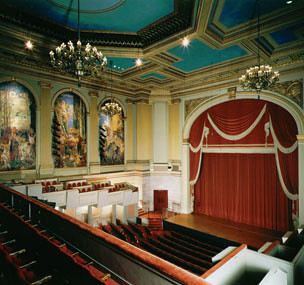

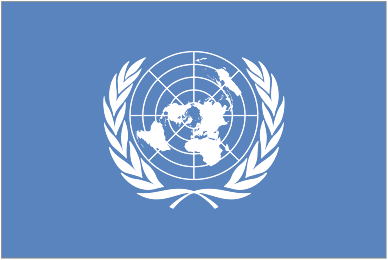 
|   June 26, 1945 - Veterans Auditorium, War Memorial Veterans Building, San Francisco, California (USA). Signing of the United Nations Charter at the United Nations Conference on International Organization by 50 of the 51 original member countries. (Poland signed later). The UN Charter entered into force on October 24, 1945. The auditorium was renamed the Herbst Theatre in 1977. June 26, 1945 - Veterans Auditorium, War Memorial Veterans Building, San Francisco, California (USA). Signing of the United Nations Charter at the United Nations Conference on International Organization by 50 of the 51 original member countries. (Poland signed later). The UN Charter entered into force on October 24, 1945. The auditorium was renamed the Herbst Theatre in 1977.
| M
US
E
U
M |   1997 - Cordell Hull Birthplace & Museum State Park, 1300 Cordell Hull Memorial Drive, Byrdstown, Tennessee (USA). Preserves Hull's birthplace and personal effects which Hull donated to the citizens of Pickett County, including his 1945 Nobel Peace Prize. Cordell Hull [1871-1955] was Secretary of State 1933-1944. FDR called him "Father of the United Nations." 1997 - Cordell Hull Birthplace & Museum State Park, 1300 Cordell Hull Memorial Drive, Byrdstown, Tennessee (USA). Preserves Hull's birthplace and personal effects which Hull donated to the citizens of Pickett County, including his 1945 Nobel Peace Prize. Cordell Hull [1871-1955] was Secretary of State 1933-1944. FDR called him "Father of the United Nations." 
|


|  October 2, 1976 - "Europa-Union" plaque, near boat landing, Hertenstein on Lake Lucerne near Weggis (Switzerland). Final paragraph (in German): "May every visitor to Herteinstein dedicate himself to the idea of a united Europe." Partly hidden by bushes. Erected on 30th anniversry of the 1946 European federalist conference. The idea of a Union of European Federalists, and also the concept for a Swiss "Europapolitik" (the Herteinstein Programme) were born at the historic conference. Information from Prof. Peter van den Dungen 07Aug09. October 2, 1976 - "Europa-Union" plaque, near boat landing, Hertenstein on Lake Lucerne near Weggis (Switzerland). Final paragraph (in German): "May every visitor to Herteinstein dedicate himself to the idea of a united Europe." Partly hidden by bushes. Erected on 30th anniversry of the 1946 European federalist conference. The idea of a Union of European Federalists, and also the concept for a Swiss "Europapolitik" (the Herteinstein Programme) were born at the historic conference. Information from Prof. Peter van den Dungen 07Aug09. 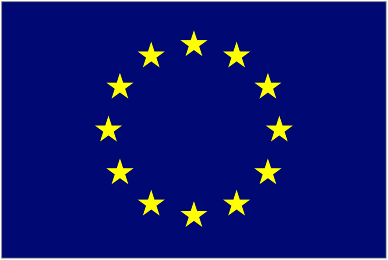
|

 October 16, 1945 - Dublin, New Hampshire (USA). "Many civic American leaders issue the Declaration of Dublin which promotes a world federal government."
October 16, 1945 - Dublin, New Hampshire (USA). "Many civic American leaders issue the Declaration of Dublin which promotes a world federal government."

 1947 - Five small world federalist organizations come together in Asheville, North Carolina (USA), and agree to merge as the United World Federalists (UWF). // "World Federalists from around the USA form the United World Federalists (UWF). This body is later reformed as the World Federalist Association (WFA)."
1947 - Five small world federalist organizations come together in Asheville, North Carolina (USA), and agree to merge as the United World Federalists (UWF). // "World Federalists from around the USA form the United World Federalists (UWF). This body is later reformed as the World Federalist Association (WFA)."
 Banner has UWF logo
Banner has UWF logo
and "World Peace
Through World Law"
 |

 August 1947 -
"In August 1947 in Montreux (Switzerland), more than 51 organizations from 24 countries came together at the Conference of the World Movement for World Federal Government and promulgated the Montreux Declaration." // "Some far-seeing men & women from many countries meet in Montreux (Switzerland), issue the Montreux Declaration & form the World Movement for World Federal Government. This global body is later renamed World Federalist Movement (WFM)." // Date & location of photo at left are uncertain. August 1947 -
"In August 1947 in Montreux (Switzerland), more than 51 organizations from 24 countries came together at the Conference of the World Movement for World Federal Government and promulgated the Montreux Declaration." // "Some far-seeing men & women from many countries meet in Montreux (Switzerland), issue the Montreux Declaration & form the World Movement for World Federal Government. This global body is later renamed World Federalist Movement (WFM)." // Date & location of photo at left are uncertain.
|


 1947 or After - License plate topper with "World Peace Thru World Law." And Lapel pin with "World Peace Through World Law." Both with logo of the UWF.
1947 or After - License plate topper with "World Peace Thru World Law." And Lapel pin with "World Peace Through World Law." Both with logo of the UWF.
|
 1947 - "I first was exposed to and excited by the idea of world federation in 1947 when I was a high school debater & the national high school debate topic was "Resolved: That the United Nations should be converted into a Democratic World Federation." -Email from Ronald Glossop 2Apr12.
1947 - "I first was exposed to and excited by the idea of world federation in 1947 when I was a high school debater & the national high school debate topic was "Resolved: That the United Nations should be converted into a Democratic World Federation." -Email from Ronald Glossop 2Apr12.

| 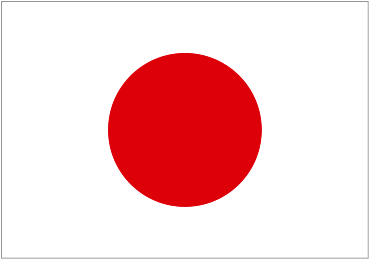 August 6, 1948 - World Federalist Movement of Japan (WFMJ), Dai-ichi Fujikawa Building 3F, 23, Yotsuya 4 chome, Shinjuku, Tokyo (Japan). "Formerly the United World Federalists of Japan. Founded in in commemoration of the third anniversary of the atomic bombing in Hiroshima. Dedicated to preventing further atrocities, WFM Japan has published two books on the history of world federalism in Japan. Has members throughout the country. Members collaborate regularly with other NGO's around the world." August 6, 1948 - World Federalist Movement of Japan (WFMJ), Dai-ichi Fujikawa Building 3F, 23, Yotsuya 4 chome, Shinjuku, Tokyo (Japan). "Formerly the United World Federalists of Japan. Founded in in commemoration of the third anniversary of the atomic bombing in Hiroshima. Dedicated to preventing further atrocities, WFM Japan has published two books on the history of world federalism in Japan. Has members throughout the country. Members collaborate regularly with other NGO's around the world."
|
 |  Date? - "World Peace Through World Law," Port Island Bridge, Onohamacho, Chuo Ward, Kobe, Hyogo Prefecture (Japan). Cannot find any more information about this monument. GLOBES Date? - "World Peace Through World Law," Port Island Bridge, Onohamacho, Chuo Ward, Kobe, Hyogo Prefecture (Japan). Cannot find any more information about this monument. GLOBES
|

| 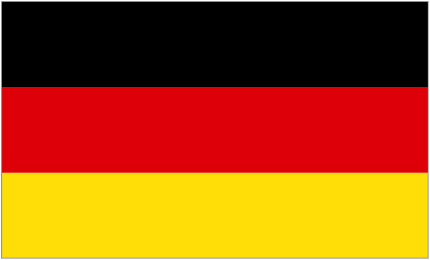 1949 - Federal Union of European Nationalities (FUEN), Schiffbrücke 41,
Flensburg (Germany). "An independent union of the
organisations of national minorities in Europe, which was established in 1949 -
at the time when the Council of Europe was set up in Versailles (France). Today (2009/10/02), the FUEN number 86 member organisations from 32 states." 1949 - Federal Union of European Nationalities (FUEN), Schiffbrücke 41,
Flensburg (Germany). "An independent union of the
organisations of national minorities in Europe, which was established in 1949 -
at the time when the Council of Europe was set up in Versailles (France). Today (2009/10/02), the FUEN number 86 member organisations from 32 states."
|



|   1950 - United Nations Headquarters Building, East River, New York City, New York (USA). Cornerstone laid October 24, 1949. Replaced UN's termporary home (1946-1951) in the Sperry Gyroscope building in Lake Success, Long Island, New York (USA). See Apsel, Joyce (2008), "Peace & human rights education: The UN as a museum for peace," pp. 37-48, in Anzai, Ikuro, et al, ed. by (2008). 1950 - United Nations Headquarters Building, East River, New York City, New York (USA). Cornerstone laid October 24, 1949. Replaced UN's termporary home (1946-1951) in the Sperry Gyroscope building in Lake Success, Long Island, New York (USA). See Apsel, Joyce (2008), "Peace & human rights education: The UN as a museum for peace," pp. 37-48, in Anzai, Ikuro, et al, ed. by (2008).
|


|   1952 - "Toward Freedom," Burlington, Vermont (USA). "A progressive perspective on world events, 'Toward Freedom' envisions a world ethic that honors the human spirit and the right of individuals to freedom of thought and creativity; advances movements for human rights, peace, justice, enlightenment, and freedom from oppression; and celebrates the contributions of the world's diverse cultures." Published by Robin Lloyd, granddaughter of Lola Maverick Lloyd [1875-1944] & daughter of William Bross Lloyd, Jr. [1908-1995]. 1952 - "Toward Freedom," Burlington, Vermont (USA). "A progressive perspective on world events, 'Toward Freedom' envisions a world ethic that honors the human spirit and the right of individuals to freedom of thought and creativity; advances movements for human rights, peace, justice, enlightenment, and freedom from oppression; and celebrates the contributions of the world's diverse cultures." Published by Robin Lloyd, granddaughter of Lola Maverick Lloyd [1875-1944] & daughter of William Bross Lloyd, Jr. [1908-1995].
|

|   1953 - American Freedom Association (AFA), Mt. Airy, North Carolina (USA) founded by Sam & Miriam Levering. "Has sponsored since 1953 an annual World Affairs Institute, which brings together specialists who address the international issues of our day. Originally held at Blue Ridge Assembly, Black Mountain, North Carolina." 1953 - American Freedom Association (AFA), Mt. Airy, North Carolina (USA) founded by Sam & Miriam Levering. "Has sponsored since 1953 an annual World Affairs Institute, which brings together specialists who address the international issues of our day. Originally held at Blue Ridge Assembly, Black Mountain, North Carolina."
|

|  1954 -
Hiroshima (Japan) declares itself a "World Federalist City." "During the arduous process of financing and building their Peace [Memorial] Park, the survivors [Hibakusha] also created a World Federalist City committed to what they perceive to be a holy, essential, and interdependent trinity: world brotherhood, world peace, and nuclear disarmament." (Quote from "Folding paper cranes: An atomic memoir" (University of Utah Press, 2005) by Leonard Bird, a US Marine who was exposed to atomic radiation at the Nevada test site and who visited Hiroshima in the 1950's, 1980's and 1990's.) 1954 -
Hiroshima (Japan) declares itself a "World Federalist City." "During the arduous process of financing and building their Peace [Memorial] Park, the survivors [Hibakusha] also created a World Federalist City committed to what they perceive to be a holy, essential, and interdependent trinity: world brotherhood, world peace, and nuclear disarmament." (Quote from "Folding paper cranes: An atomic memoir" (University of Utah Press, 2005) by Leonard Bird, a US Marine who was exposed to atomic radiation at the Nevada test site and who visited Hiroshima in the 1950's, 1980's and 1990's.)
|


|  1958 - "World Peace Through World Law" published by Louis B. Sohn [1914-2006] and Grenville Clark [1882-1967]. This book "examined proposals to transform the United Nations into a world government. It proposed a Revised United Nations Charter which would (1) allocate
votes in the UN General Assembly based on member nations' populations, (2) replace the UN Security Council with an Executive Council with China, India, USSR, and the US as permanent members, and no veto power, (3) make a World Police Force the only military force permitted in the world." 1958 - "World Peace Through World Law" published by Louis B. Sohn [1914-2006] and Grenville Clark [1882-1967]. This book "examined proposals to transform the United Nations into a world government. It proposed a Revised United Nations Charter which would (1) allocate
votes in the UN General Assembly based on member nations' populations, (2) replace the UN Security Council with an Executive Council with China, India, USSR, and the US as permanent members, and no veto power, (3) make a World Police Force the only military force permitted in the world."

|

 1974 - Southern Illinois University at Edwardsville (SIUE), Edwardsville, Illinois (USA). "In 1974, SIUE declared that it is a 'World University' -- a
University which recognizes that it is a part not only of a state community & a national community but
also of a global community (policy 1Q6). As an appropriate symbol of this declaration, the United
Nations flag is flown on the main campus flagpole along with the US & Illinois State flags.
The international students expressed what the United Nations flag means to them. 'Whether we are
from Europe, Asia or the Middle East, even though we have differences through cultural, geographic
& political backgrounds, we are building on our relationships here,' said Mohamed Chakir, a Fulbright
scholar from Morocco." /// In 1974, the SIUE student world federalist organization which I founded managed to get the university to declare itself a world university which began to fly the UN flag at the center of campus along with the American flag & the flag of the State of Illinois. It is still flying there. It was about that time that I began to think of myself as a world citizen.
At that time I also began teaching course on the 'Problem of War & Peace' & helped start a Peace Studies program." -- Email from Ronald Glossop 2Apr12.
1974 - Southern Illinois University at Edwardsville (SIUE), Edwardsville, Illinois (USA). "In 1974, SIUE declared that it is a 'World University' -- a
University which recognizes that it is a part not only of a state community & a national community but
also of a global community (policy 1Q6). As an appropriate symbol of this declaration, the United
Nations flag is flown on the main campus flagpole along with the US & Illinois State flags.
The international students expressed what the United Nations flag means to them. 'Whether we are
from Europe, Asia or the Middle East, even though we have differences through cultural, geographic
& political backgrounds, we are building on our relationships here,' said Mohamed Chakir, a Fulbright
scholar from Morocco." /// In 1974, the SIUE student world federalist organization which I founded managed to get the university to declare itself a world university which began to fly the UN flag at the center of campus along with the American flag & the flag of the State of Illinois. It is still flying there. It was about that time that I began to think of myself as a world citizen.
At that time I also began teaching course on the 'Problem of War & Peace' & helped start a Peace Studies program." -- Email from Ronald Glossop 2Apr12. 

|   October 30, 1974 - Tower of Peace, Greenbelt in front of Peace Memorial Museum (East Building), Hiroshima (Japan). Erected by the "Hiroshima Prefectural Committee for the Erection of a Tower to Commemorate [the 20th anniversary of] Hiroshima's Declaration of Itself as a World Federalist City." Note Japanese logo is identical to old UWF logo in USA. Five sides which symbolizing the five continents. Front is brown granite, the other four sides Grecian marble. Designed by Masami Kawamura. NB: Not shown in the Virtual E-Tour. Information courtesy of Michiko Yamane. October 30, 1974 - Tower of Peace, Greenbelt in front of Peace Memorial Museum (East Building), Hiroshima (Japan). Erected by the "Hiroshima Prefectural Committee for the Erection of a Tower to Commemorate [the 20th anniversary of] Hiroshima's Declaration of Itself as a World Federalist City." Note Japanese logo is identical to old UWF logo in USA. Five sides which symbolizing the five continents. Front is brown granite, the other four sides Grecian marble. Designed by Masami Kawamura. NB: Not shown in the Virtual E-Tour. Information courtesy of Michiko Yamane.
|



|   October 12-17, 1975 - 10-cent stamp commemorating "World Peace through Law" (USA). "A prelude to the Seventh World Law Conference of the World Peace Through Law Center (WPTLC), convening in Washington when more than 4,000 judges, lawyers, and law professors from more than 100 nations will meet in conference." October 12-17, 1975 - 10-cent stamp commemorating "World Peace through Law" (USA). "A prelude to the Seventh World Law Conference of the World Peace Through Law Center (WPTLC), convening in Washington when more than 4,000 judges, lawyers, and law professors from more than 100 nations will meet in conference."
|
 1978 - "It was in 1978 while working on the first edition of "Confronting War" (a problem-solving approach to the problem of war) as a text for [my] course on war & peace [at SIUE] that I began thinking like an Esperantist. As a result of brainstorming about all the things that would make war less likely, I noted that a world language would help greatly not only for communication but also for self-identity. Shortly after that I learned that Esperanto had already been developed, so I began learning it in 1980." -- Email from Ronald Glossop 2Apr12.
1978 - "It was in 1978 while working on the first edition of "Confronting War" (a problem-solving approach to the problem of war) as a text for [my] course on war & peace [at SIUE] that I began thinking like an Esperantist. As a result of brainstorming about all the things that would make war less likely, I noted that a world language would help greatly not only for communication but also for self-identity. Shortly after that I learned that Esperanto had already been developed, so I began learning it in 1980." -- Email from Ronald Glossop 2Apr12.
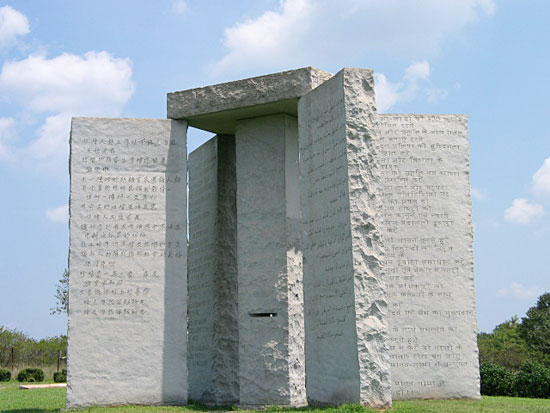
| S
CU
L
P
T |   March 22, 1980 - Georgia Guidestones, Elbert County, Georgia (USA). aka "The American Stonehenge." Four giant granite stones engraved with 10 "Guides" or commandments in 8 different languages setting forth the basic principles of the establishment of the governance of a one world order with a unified world court of law where populations and reproduction are controlled, a unified "living new" language, whose philosophical foundation is built on "spirituality" & man’s environmental responsibility to live in harmony with nature. Built by "R.C. Christian" whose true identity remains unknown. March 22, 1980 - Georgia Guidestones, Elbert County, Georgia (USA). aka "The American Stonehenge." Four giant granite stones engraved with 10 "Guides" or commandments in 8 different languages setting forth the basic principles of the establishment of the governance of a one world order with a unified world court of law where populations and reproduction are controlled, a unified "living new" language, whose philosophical foundation is built on "spirituality" & man’s environmental responsibility to live in harmony with nature. Built by "R.C. Christian" whose true identity remains unknown.
|


|  1982 - "Facing Reality: From World Federalism to the CIA" by Cord Meyer [1920-2001]. "This is, in effect, two books. The first is a fascinating autobiography tracing Cord Meyer's logical progression from badly wounded Marine Corps officer to fervent leader of the World Federalist movement after World War II to fervent CIA official & sophisticated cold warrior. The second book is a long and uninspired editorial on the menace of Russia's new 'geopolitical offensive.'" 1982 - "Facing Reality: From World Federalism to the CIA" by Cord Meyer [1920-2001]. "This is, in effect, two books. The first is a fascinating autobiography tracing Cord Meyer's logical progression from badly wounded Marine Corps officer to fervent leader of the World Federalist movement after World War II to fervent CIA official & sophisticated cold warrior. The second book is a long and uninspired editorial on the menace of Russia's new 'geopolitical offensive.'"
|

| 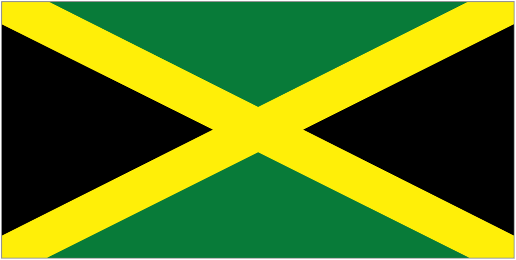 December 10, 1982 - Law of the Sea Treaty (LOST), Montego Bay (Jamaica). According to John Ewbank, this treaty is "attributable almost entirely not to the organizations, but to three individuals, Sam Levering [1908-1993], Miriam Levering [1913-1991], and Dr. John J. Logue." Sam & Miriam owned and operated Levering Orchard in Ararat, Virginia (USA). Click here for "Sinister Secrets of the U.N. Sea Treaty."
Map shows countries which have ratified (dark green), signed but not yet ratified (light green), & did not sign (gray). December 10, 1982 - Law of the Sea Treaty (LOST), Montego Bay (Jamaica). According to John Ewbank, this treaty is "attributable almost entirely not to the organizations, but to three individuals, Sam Levering [1908-1993], Miriam Levering [1913-1991], and Dr. John J. Logue." Sam & Miriam owned and operated Levering Orchard in Ararat, Virginia (USA). Click here for "Sinister Secrets of the U.N. Sea Treaty."
Map shows countries which have ratified (dark green), signed but not yet ratified (light green), & did not sign (gray).  |

|


|  1983
"Confronting War: An Examination of Humanity's Most Pressing Problem" by Ronald J. Grossop. "The updated & revised through 2000 edition of an immensely successful textbook reflects upheavals in the global geopolitical climate & examines why countries continue to build war arsenals in a time of relative peace. As an increasing number of countries gain nuclear capabilities & the number of intranational & regional conflicts grow, it becomes apparent that the end of the Cold War did not bring an end to the threat of war." // "The first edition of "Confronting War" was published in 1983 and the second in 1987. The publisher McFarland wanted a 3rd edition in 1992, but I asked for a delay because so much was changing at that time and persuaded them to publish "World Federation?" (1993) instead. Then the third edition of CW was published in 1994 & the 4th edition in 2001 just after I retired." -Email from Ronald Glossop 2Apr12. 1983
"Confronting War: An Examination of Humanity's Most Pressing Problem" by Ronald J. Grossop. "The updated & revised through 2000 edition of an immensely successful textbook reflects upheavals in the global geopolitical climate & examines why countries continue to build war arsenals in a time of relative peace. As an increasing number of countries gain nuclear capabilities & the number of intranational & regional conflicts grow, it becomes apparent that the end of the Cold War did not bring an end to the threat of war." // "The first edition of "Confronting War" was published in 1983 and the second in 1987. The publisher McFarland wanted a 3rd edition in 1992, but I asked for a delay because so much was changing at that time and persuaded them to publish "World Federation?" (1993) instead. Then the third edition of CW was published in 1994 & the 4th edition in 2001 just after I retired." -Email from Ronald Glossop 2Apr12.
|



| 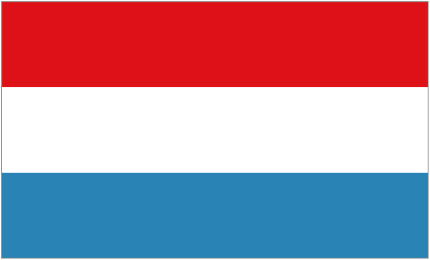 After 1985 - "Schengen Agreement" monument, near Moselle bridge, Schengen (Luxembourg). "Three steel pillars, each with a star represent the first participant countries of the Schengen Agreement, being France, Germany & the Benelux countries, who met here in the triangle where the borders of Germany, France & Luxembourg meet... This is a treaty signed in 1985, on the river-boat "Princesse Marie-Astrid," providing for the removal of systematic border controls between the participating countries." After 1985 - "Schengen Agreement" monument, near Moselle bridge, Schengen (Luxembourg). "Three steel pillars, each with a star represent the first participant countries of the Schengen Agreement, being France, Germany & the Benelux countries, who met here in the triangle where the borders of Germany, France & Luxembourg meet... This is a treaty signed in 1985, on the river-boat "Princesse Marie-Astrid," providing for the removal of systematic border controls between the participating countries."



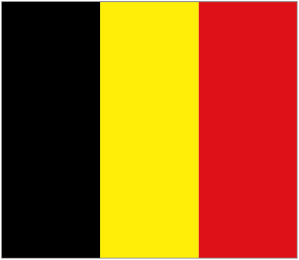

|


|  July 28, 1993 - "World Federation?: A Critical Analysis of Federal World Government" by Ronald J. Glossop. "The pros & cons of a democratic federal world government are carefully reasoned here, as are the basic concepts of such a federation, and the relationship of law & government. The author’s analysis brings one to the conclusion that a global federation is inevitable despite the many obstacles." // "I persuaded McFarland to publish "World Federation?" (1993) instead." -Email from Ronald Glossop 2Apr12. July 28, 1993 - "World Federation?: A Critical Analysis of Federal World Government" by Ronald J. Glossop. "The pros & cons of a democratic federal world government are carefully reasoned here, as are the basic concepts of such a federation, and the relationship of law & government. The author’s analysis brings one to the conclusion that a global federation is inevitable despite the many obstacles." // "I persuaded McFarland to publish "World Federation?" (1993) instead." -Email from Ronald Glossop 2Apr12.
|



|  July 3, 2000 - International Tribunal for the Law of the Sea, Elbchaussee, Nienstedten, Hamburg (Germany). "Provided at the expense of the Federal Government, including a substantial contribution from the City of Hamburg."
Overlooks the river Elbe. According to John Ewbank, "this tribunal represents the principal achievement of world federalists over the past 70 years." July 3, 2000 - International Tribunal for the Law of the Sea, Elbchaussee, Nienstedten, Hamburg (Germany). "Provided at the expense of the Federal Government, including a substantial contribution from the City of Hamburg."
Overlooks the river Elbe. According to John Ewbank, "this tribunal represents the principal achievement of world federalists over the past 70 years."
|



|  August 2, 2003 - Norman Cousins Monument, in front of Hiroshima Peace Memorial Museum, Hiroshima (Japan). Honors achievements of Norman Cousins [1915-1990], "including promotion of the moral adoption project for A-bomb & war orphans, his efforts in helping female A-bomb survivors receive keloid treatment in the US, & his continued appeal for elimination of nuclear weapons." Cousins was president of the World Federalist Association (WFA) and wrote "Who Speaks for Man?" in 1953. Left image by EWL. #53 of 56 "cenotaphs & monuments" on the Virtual E-Tour. August 2, 2003 - Norman Cousins Monument, in front of Hiroshima Peace Memorial Museum, Hiroshima (Japan). Honors achievements of Norman Cousins [1915-1990], "including promotion of the moral adoption project for A-bomb & war orphans, his efforts in helping female A-bomb survivors receive keloid treatment in the US, & his continued appeal for elimination of nuclear weapons." Cousins was president of the World Federalist Association (WFA) and wrote "Who Speaks for Man?" in 1953. Left image by EWL. #53 of 56 "cenotaphs & monuments" on the Virtual E-Tour. 
|

| B
R
ID
G
E |   2004 - Passerelle des Deux Rives / Gateway of the Two Banks, across Rhine River between Strasbourg (France) & Kehl (Germany).
"Permanent artistic installation, a bond between two countries for which the border formerly seemed & wanted to be insuperable. According to Roland Ries, then mayor of Strasbourg, 'Here, it is indeed Europe, because this bridge connects two countries that have been torn apart for a long time; the reconciliation of these two countries is today one of the surest supports of the European construction.'" Not to be confused with the Bridge of Europe which is a highway bridge a few hundred meters downstream (right image). 2004 - Passerelle des Deux Rives / Gateway of the Two Banks, across Rhine River between Strasbourg (France) & Kehl (Germany).
"Permanent artistic installation, a bond between two countries for which the border formerly seemed & wanted to be insuperable. According to Roland Ries, then mayor of Strasbourg, 'Here, it is indeed Europe, because this bridge connects two countries that have been torn apart for a long time; the reconciliation of these two countries is today one of the surest supports of the European construction.'" Not to be confused with the Bridge of Europe which is a highway bridge a few hundred meters downstream (right image). 
| 
|
2004 - "The name of the World Federalist Association (WFA) was changed to Citizens for Global Solutions in 2004."
.jpg)

|   February 11, 2005 - "The Board of Directors of the World Federalists of Northern California, which a year before had incorporated as a public benefit educational organization in California, take on the new name of Democratic World Federalists (DWF)." "Our office is in San Francisco, the city where the finishing touches were put on the UN Charter in 1945, and where we hosted the XXIInd World Congress of the WFM in 1995. California is also the state where in 1949 United World Federalists of California, led by President Alan Cranston & Executive Director Robert Walker, convinced the State Legislature to pass the California Resolution, the first of several state resolutions calling for the USA to participate in a world federal government." Click here for Wikipedia page. February 11, 2005 - "The Board of Directors of the World Federalists of Northern California, which a year before had incorporated as a public benefit educational organization in California, take on the new name of Democratic World Federalists (DWF)." "Our office is in San Francisco, the city where the finishing touches were put on the UN Charter in 1945, and where we hosted the XXIInd World Congress of the WFM in 1995. California is also the state where in 1949 United World Federalists of California, led by President Alan Cranston & Executive Director Robert Walker, convinced the State Legislature to pass the California Resolution, the first of several state resolutions calling for the USA to participate in a world federal government." Click here for Wikipedia page.
|

|   Date? - Speakers Corner, Hyde Park, London (England). Photographer's notes: "The man in my photograph is espousing the virtues of world federalism. The World Federalist Movement also has a website (with a logo that looks like that of the United Nations!) which says it is an international citizen's movement working for justice, peace, and sustainable prosperity. It says: 'We call for an end to the rule of force, through a world governed by law, based on strengthened and democratized world institutions. World federalists support the creation of democratic global structures accountable to the citizens of the world and call for the division of international authority among separate agencies.' Heavy stuff and high ideals!" Date? - Speakers Corner, Hyde Park, London (England). Photographer's notes: "The man in my photograph is espousing the virtues of world federalism. The World Federalist Movement also has a website (with a logo that looks like that of the United Nations!) which says it is an international citizen's movement working for justice, peace, and sustainable prosperity. It says: 'We call for an end to the rule of force, through a world governed by law, based on strengthened and democratized world institutions. World federalists support the creation of democratic global structures accountable to the citizens of the world and call for the division of international authority among separate agencies.' Heavy stuff and high ideals!"
|

"A History of the World Government Movement"
by John R. Ewbank, about 2001
(copied from website of Home Rule Globally (HRG) & annotated by EWL)
...At the Treaty of Versailles [in 1919], there was a document on the table proposing that the world authority [League of Nations] administer a world patent system. However, it was never debated or voted upon. If such global federalization merely of patent law had been adopted, this might have featured global jurisdiction over individuals. If the world authority had had a reliable source of income from administering a patent system, then it would not have had the collapse attributable to non-payment of dues and withdrawals from the world authority. Federalization of patents, although seemingly trivial, might have prevented WWII and achieved a per capita income possible double what it is today. [John Ewbank is a patent attorney and probably draws this bit of history from his own professional background.]
When Senator Henry Cabot Lodge [1850-1924] opposed entry of the USA into the League of Nations, his arguments focused significantly upon its prolongation of the unmanageability of the war system, without global jurisdiction over the individual. Many militaristic historians distorted such rejection contending that USA was isolationist. Hence few realize how strongly world federalist were the speeches of Senator Lodge in opposing entry into the League of Nations. Its failure was due to its structure and dependence upon traditional international law without federalism.
Various authors favored world federalism, but the issue was predominantly dormant until 1933. The important beginning of the world federalist movement was the establishment in about 1933 [1937 according to the NY Public Library] of the Campaign for World Government (CWG) by Lola Maverick Lloyd [1875-1944] and Roswika Schwimmer [1877-1948]. By 1936, Bill Lloyd [William Bross Lloyd, Jr., 1908-1995, son of Lola Maverick Lloyd] was flying a plane to publicize in many areas why federalized governing individuals was the manageable approach for coping with the horrendousness of militarism. Roswika Schwimmer and Lola Maverick Lloyd undoubtedly should have received the Nobel Peace Prize. Their 1933 pamphlet on Questions and Answers about World Government continues to be useful after 68 years. [This number indicates that this paragraph was written about 2001.]
[Perhaps John is refering to their pamphlet "Chaos, War or a New World Order," which says, "The Federation of Nations must be a democratic league controlled by direct representation of the peoples and not by governments and bureaucracies." Accoding to Lloyd's granddaughter Robin, "the main lines of this blueprint were drawn up in 1924, revised and published in 1937 and again in mid-war, in 1942."]
The Campaign for World Government also stimulated various attacks upon world federation. Clarence Straight [Clarence Streit] [1896-1986] was a proficient journalist who both exploited and distorted public interest in world federalism aroused by the Campaign for World Government. Instead of seeking world government to abolish war, Straight wanted to wage war against Russia more effectively. His wordcraftsmanship skills were remarkable. Straight wrote "Union Now" in 1939, selling enough books to start an organization of the same name ["Federal Union," according to the SC website]. He argued that Russia could be opposed more effectively if all democracies were to unite.
A decentralist friend of mine, Leopold Kohr [1909-1994], wrote "The Breakdown of Nations" as a rebuttal to "Union Now." Kohr noted that national militarism was a minor irritant if nations were sufficiently small, but that big nations tended to self-destruct when using militarism and/or modern technology. His analysis has proven to be a much more accurate than the analysis by [Streit]. Substantially all authors, except a few decentralist writers such as K. Sale [Kirkpatrick Sale, b.1937] and J. Papworth [unidentified], have ignored Kohr. However, the Association to Unite Democracies (AUD) continues to promote [Streit]'s "Union Now" and to have significant vitality as a Yankee organization. AUD is the federalist group that has through the decades had more Congress persons supporting it than other federalist groups. Many affiliates overseas collaborated at The Hague in 1998 in conducting a Citizens Constitutional Convention [unidentified]. AUD claimed that [President Bill] Clinton praised such international federalization in a speech at a diplomatic gathering in Poland. AUD indicated that [President George] Bush praised the "rule of law" in one of his speeches at a similar gathering of diplomats.
[Apparently the Association to Unite Democracies (AUD) has changed its name to the Streit Council for a Union of Democracies (SC), 1629 K Street, NW (Suite 300), Washington, DC 20006.]
I contend that each delegate to the World Parliament should represent the entire earth and that geographical districts for World Parliamentarians is an obsolete concept. I oppose representation by nations in a world federation. However, most Proposals for a world constitution have featured a chamber for delegates from nations. If there were such a chamber, then I would want only democracies to belong to such Supra-National Federation. Accordingly I have maintained a membership in AUD and once offered to serve on its Board. The "Union Now" ["Federal Unon"] organization, predecessor of AUD, had a schism in 1940, because Mildred Riordan Blake [b.1897] contended that the invitation to participate in the federations should be sent to all, thus establishing a more inclusive federalist organization then called World Federalists.
The American Movement for World Government (AMWG) carries on the generic, inclusive emphasis upon federalized governing of all humans which was initiated by Mildred Riordan Blake, Stewart Ogilvy [1915-1986], Tom Griessemer, et al. Such membership organization supplemented the educational campaigns conducted by the Campaign for World Government.
[My wife] Marjorie and I [both pictured above] were active in both [the] World Federalists and the Campaign for World Government when we lived in the East [i.e. New York City] 1940-45. Edyth Wynner was my mentor concerning federalism 1943-45. Marjorie was secretary to Tracy Mygatt in handling the New York City office of the Campaign for World Government. Marjorie was Treasurer of the national Peace Now Movement [unidentified], which sought a negotiated peace [to end World War II?]. The Ewbanks [Marjorie and I] stressed that decentralist-federalism was the most hopeful bonus for stimulating a negotiated peace.
After the Hiroshima bombing in 1945, dozens of world federalist groups evolved to compete with Union Now ["Federal Unon"] and World Federalists. I strongly favored the multiplicity of groups so that each could be true to its own doctrine. Volunteers will only work for a group for which they have enthusiasm. Hence, a variety of organizations is necessary to cope with the inherent variety of opinions. Of course there were critics who argued that if the world federalists could not agree among themselves, how they could stimulate many nations to agree. A gathering of many varieties of federalists gathered in Cleveland [Ohio] in 1946 to evaluate the situation. I argued that the issue was whether individual liberty was to be properly recognized by allocating sovereignty from the bottom up, and that the minority of people who happened to be federalist activists at a particular time could not assuredly formulate a winning strategy for such a drastic transformation of the institutional matrix. Again I was in the minority.
Unfortunately, the various groups merged in [Asheville, North Carolina] in 1947, and temporarily functioned as United World Federalists (UWF), later [in the mid-1970's] changing their name to World Federalist Association (WFA). Stewart Ogilvy [1915-1986], Vernon Nash, Tom Griessemer, and the [other] personalities who understood the problem were fired and replaced by bureaucrats treating grass-roots members as the corporals obligated to obey the wise strategists [at association headquarters] in Washington.
[The World Federalist Association (WFA) changed its name in November 2003 to Citizens for Global Solutions (CGS).]
In 1955, the United World Federalists (UWF) hierarchy concluded that their effectiveness was weakened because their literature listed the alternative of calling a World Constitutional Convention as among its aspirations. Such potentiality was deleted. This deletion irritated Mildred Riordan Blake sufficiently to lead a second schism. Thus she and some other federalists, mainly in the area of New York City, established the American Movement for World Government (AMWG) in 1955. The group continues to operate under by-laws designed for the 1955 situation. AMWG quickly became the “generic” advocate for the federalized governing of individuals, while UWF plodded along with its gimmicks aimed at collecting membership dues. However AMWG generally had its greatest strength in the New York City area, and did not, insofar as I recall, have any chapter in the Philadelphia area.
Although the Hiroshima bombing stimulated interest in world federalism, the ten years of campaigning without federalization led to significant apathy. [Senator Joseph] McCarthy’s anti-communism campaigns [from the late 1940's until the late 1950's] and similar fascistic projects in other parts of the world meant that the contributions to federalist groups plummeted both in the USA and globally. The world federalist movement (WFM) went into a prolonged hibernation period. In Washington the UWF-WFA and AUD each survived as functioning organizations. However, AMWG deteriorated into what some described as a “corporate shell”.
[Marjorie's and my] Ewbank participation in AMWG started after it was predominantly a corporate shell searching rather futilely for a membership base. I attended board meetings and accepted a position on the Board. I routinely attended the Peace Forum [unidentified] managed by the World Peace News [300 East 33rd Street, New York City, NY 10016]. Tom Liggett [Thomas Liggett, editor and publisher of World Peace News] and Bill Cox [William H. D. Cox, Jr., founder of AMWG] had entered into an agreement that the World Peace News would be treated as a publication of AMWG so long as it was mutually agreeable, but giving each an option of termination. AMWG had been among the first of the federalist organizations to achieve the highly advantageous 501[c][3] status, so that it could collect tax-deductible contributions and pass them though for the publication of the World Peace News. It is my recollection that during some years when I was on the AMWG Board, it had no meetings except for the annual election of the officers as a few minutes during the day of the [annual] Peace Forum [unidentified]. Even when members were recruited as members or as board members, the drop-out rate tended to exceed the recruitment rate.
After my retirement in 1982, I could attend Board Meetings other than on Saturday. After AMWG ceased to have a large membership, and particularly after it ceased to maintain any regular office, there were efforts to preserve AMWG in hopes that the generic federalist message would again be marketable. Edyth Wynner and Bill Cox became the activists. Then Bill Cox became ill, and for about a decade Edyth Wynner kept AMWG alive through her activism. She recognized the criticality of maintaining a generic federalist organization, and recognized that the role of AMWG was distinguishable from the activities of WFA. She and Georgia Lloyd [1913-1999, fourth child of Lola Maverick Lloyd] were both concerned that somehow the uniqueness of AMWG should continue notwithstanding its temporary problems in recruiting members. AMWG obtained status as a 501[c][3] status. Possibly it was the first federalist organization to achieve such status. Eventually UWF [now WFA] gained 501[c][3] status. Even when AMWG was relatively dormant, it could be an organization through which contributions could be passed to projects such as World Peace News, edited by Tom Liggett.
During the time when the AMWG was significantly active, that is about 1955-57, [my wife] Marjorie and I were busy in Southampton [just outside Philadelphia, Pennsyvania] seeking to adopt a baby, paying little attention to NY City and its federalist activities. There never was a Philadelphia area chapter for AMWG so far as I know. Possibly it was through our subscriptions to Campaign for World Government that we learned about World Peace News and started subscribing to it. Tom Liggett sometimes published some of my letters to the editor. I had been enthusiastic about Edyth Wynner’s federalist activities because she was my mentor guiding me about federalism when we lived in New York City 1943-45. Eventually I joined the board of AMWG to supplement my pattern of attending Tom Liggett’s annual [Peace] Forum. Although AMWG had once been a vital organization, it was a shell struggling to survive by the time I joined the board. Obtaining board members or officers has been a difficult hurdle from time I joined. I know of its active days of 1955-57 only as history.
[John R. and Marjorie Ewbank are still on AMWG's Advisory Council in 2010, according to the AMWG website. They are also still on the Editorial Advisory Board of World Peace News. Marjorie is clerk of the Tract Association of Friends in Philadelphia.]
There have been many fiascoes among projects by federalist groups around the world. At one time AUD was persuaded to deplete much of its endowment on a spectacular event in Seattle [Washington]. Instead of gaining the tremendous support aspired for by its managers, it brought AUD to the brink of extinction. Only the voluntary work of [Captain] Tom Hudgens brought it through such a crisis.
Phil Isely [Professor Henry Philip Isely, b .1915] organized a World Constitution and Parliament Association, which has sponsored about a dozen fiascoes, traceable in part to dissipating funds for travel for delegates from pauper areas. Only the wealth of Phil Isely has kept the organization alive.
Gary Davis [Garry Davis, b.1921] has been wealthy enough to maintain the World Government of World Citizens (WGWC) and its affiliate the World [Service] Authority. It has issued identification documents [passports] to thousands of refugees, thus on a thousand fold basis doing [work] that resembled the work of Larsen [Fridtjog Nansen, 1861-1930] winner of the Nobel Peace Prize [in 1922].
Dozens of federalist projects by individuals have resembled the reform activism of Isely and Davis, who have collaborated through the World Government Coordinating Council, with which [I] John Ewbank [have] been affiliated for about thirty years. It is now called the Coalition for Democratic World Government, and is headed by Hank Stone. [Accoding to its website, this is "a coalition of organizations working in various ways toward a civilized system of world law." The website lists 19 "member groups" and five "friends."]
Dozens of entrepreneurs have organized world governments and flourished for a while, but none has been wealthy enough to have significant impact. Oceanus claimed the ocean as a nation, and promoted world federalism while claiming national status within the treaty system. The tonnage of boats flying the Oceanus flag exceeded the tonnage flying the Stars and Stripes when [George] Washington made his Farewell Address [in 1796]. Admiral McClaskey is apparently in her second seve[n] year term as Admiral of Oceanus, which publishes Oceanus news at $15/yr at POB 52-1292, Miami, FL 33152. I purchased a passport from Oceanus, and successfully used it in entering and leaving Costa Rica in 1992. I also used a Garry Davis World [Service] Authority passport for entering and leaving France in 1998.
[My organization] Home Rule Globally maintains a Gentle Usurpation Institute which seeks to register all varieties of entrepreneurial world governments. Some are fascistic, but interesting to visit as Websites. Books have been written about how to start your own country. There is a geographical desk in the US State Department for seeking to maintain some registry of these projects.
After WFA had renewed financial strength, it moved the headquarters of the World Federalist Movement (WFM) from Amsterdam, Netherlands to New York City, and hired Bill Pace William R. Pace as director. He had been a federalist activist in Colorado prior to being on the staff of Amnesty International. He knew how NGOs lobbied various groups at the UN. His wife was also a reform activist. She became the manager for the Hague Appeal for Peace (HAP).
[Marjorie Ewbank wrote February 13, 2010: "One correction we should make in John's history of World Federation. [He and I] worked with the head of the World Federalists organization in New York City in the early 40's and it moved from NYC to Netherlands and not Netherlands to NYC. I believe it was Tom Griessemer who was the head of the WF in NYC. I believe he died in the Netherelands not too many years later." /// According to its website, "the International Secretariat of the World Federalist Movement-Institute for Global Policy (WFM-IGP) is now 'co-located' in New York City (708 Third Avenue, 24th Floor) and in the Netherlands (Bezuidenhoutseweg 99A,
2594 AC, The Hague)."]
WFM focused much of its energies on promoting the treaty for the International Criminal Court (ICC), intended to be a UN court on a permanent basis, instead of the ad hoc basis of most tribunals affiliated with the UN for punishing individuals. [I John] Ewbank sought to promote a separate organization concerned with endowing the ICC so that it might have at least an iota of independence and not be subject to withholding of dues by nations, but this effort failed. Most treaties resemble the treaty for the world court, thus permitting a nation to veto attempts to bring a dispute within the jurisdiction of the World Court (ICJ).
The significant break-through in international law was achieved when the USSR approved of compulsory jurisdiction for the Law of the Sea Tribunal. Such court has been functioning for several years. [I, John] Ewbank [am] acquainted with [Bulgarian] Judge Alexander Yarikov [Alexander Yankov] of the Law of the Sea Tribunal [in Hamburg, Germany]. This tribunal represents the principal achievement of world federalists over the past 70 years, attributable almost entirely not to the organizations, but to three individuals, Sam and Miriam Levering and Dr. John J. Logue.




1897 or 1899 - "The Federation of the World" is published by Benjamin Franklin Trueblood [1847-1916]. A Quaker, Trueblood was educated at Earlham College in Richmond, Indiana (AB 1869 & AM 1875), and at the State University of Iowa (LLD 1890). He was president of Wilmington College in Wilmington, Ohio (1874-1879), president of Penn College in Oskaloosa, Iowa (1879-1890), and general secretary of the American Peace Society in Boston & Washington (1892-1915). Click here for more photos of Trueblood.


December 14, 1910 - Carnegie Endowment for International Peace (CEIP), Washington, DC (USA). Andrew Carnegie [1835-1919], "like other leading internationalists of his day, believed that war could be eliminated by stronger international laws and organizations." Carnegie charged trustees to use the Endowment to "hasten the abolition of international war, the foulest blot upon our civilization" and chose longtime adviser Elihu Root [1845-1937], Senator from New York and former Secretary of War and of State, to be its head. Awarded the Nobel Peace Prize in 1912, Root served as Endowment president until 1925.

August 28, 1913 - Vredespaleis / Peace Palace, The Hague (Netherlands). Constructed and still owned by the Carnegie Foundation. Now home of the International Court of Justice (ICJ) or World Court, the Permanent Court of Arbitration (PCA), the Peace Palace Library, and the Hague Academy of International Law.




1915-1916 - Henry Ford's Peace Ship. "On the outbreak of the First World War in Europe [in 1914], Henry Ford, the wealthy American businessman, soon made it clear he opposed the war and supported the decision of the Woman's Peace Party (WPP) to organize a peace conference in Holland. After the conference Ford was contacted by America's three [sic] leading anti-war campaigners, Jane Addams [1860-1935], Roswika Schwimmer [1877-1948], Oswald Garrison Villard [1872-1949], and Paul Kellogg [1879-1958]. They suggested that Ford should sponsor an international conference in Stockholm to discuss ways that the conflict could be brought to an end. Ford came up with the idea of sending a boat of pacifists to Europe to see if they could negotiate an agreement that would end the war. He chartered the ship Oskar II, and it sailed from Hoboken, NJ, on December 4, 1915. The Ford Peace Ship reached Stockholm in January, 1916, and a conference was organized with representatives from Denmark, Holland, Norway, Sweden and the USA. However, unable to persuade representatives from the warring nations to take part, the conference was unable to negotiate an Armistice." Upper images show the ship, its captain, Henry Ford [1863-1947] & Lola Maverick Lloyd [1875-1944] on board. Bottom image is "Henry Ford's Peace Ship," a painting by Mary McCleary, Regent's Professor of Art Emeritus, Stephen F. Austin State University.



June 28, 1919 - Galerie des Glaces / Hall of Mirrors, Palace of Versailles, Versailles (France). This room was constructed by King Louis XIV in 1678-1684. It became a an "unintentional monument" with the signing of the Treaty of Versailles with Germany ending the World War I (1914–1918).

1919 - "Signing of Peace in the Hall of Mirrors," Imperial War Museum, London (England). By Irish artist Sir William Orpen [1878- 1931]. Norman Stone (2009) says this "captured the political wrangling and vainglory of the gathered politicians and statesman whom Orpen came to loathe but increasingly relied upon for his post-war portrait commissions. The peace-makers look extraordinarily pleased with them- selves as they pose for rather wooden immortaliation: silkiness of mous- tache, acuteness of gaze, dignity of stance. A Maharajah and a Japanese baron look on, evidence of the peace-makers' internationalism and benevolence. Clemenceau is said to have remrked that he was between a would-be Napoleon (Lloyd George) and a would-be Jesus Christ (Woodrow Wilson)... Far above the delegates reads the legend 'Le roy gouverne par lui même,' a pointed reference to their endless squabbling."

January 16, 1920 - League of Nations, Paris (France). First council meeting, six days after the Versailles Treaty came into force. In November 1920, the headquarters of the League will move to Geneva, where the first General Assembly will be held on November 15, 1920, with representatives from 41 nations in attendance.



March 4, 1921 - Woodrow Wilson House Museum, National Trust for Historic Preservation, 2340 S Street, NW, Kalorama, Washington, DC (USA). "Only presidential museum in DC." Home of Woodrow Wilson [1856-1924] who was presdent 1913-1921. He received the Nobel Peace Prize in 1919 and died in this house on February 3, 1924. His widow Edith lived here until her death on December 28, 1961. She bequeathed the property & many of its furnishings to the National Trust. Inset shows celebration on Armistice Day, November 11, 1918. One of 27 US museums in "Museums for Peace Worldwide" edited by Kazuyo Yamane (2008).



1925 - Frank A. Miller Testimonial Peace Tower, Mount Rubidoux, Riverside, California (USA). Frank Augustus Miller [1857-1935] founded the Institute of World Affairs which is now the World Affairs Council of Inland Southern California. Tower bears the names & coats of arms of all nations as of 1925. Entry #111 in the "Peace Movement Directory" by James Richard Bennett (2001).
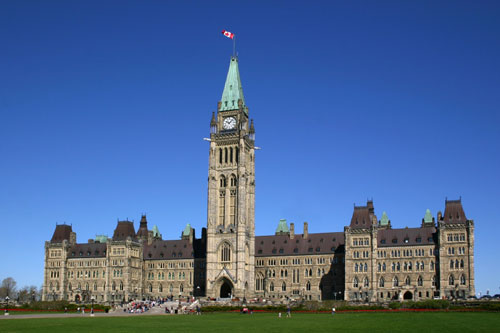
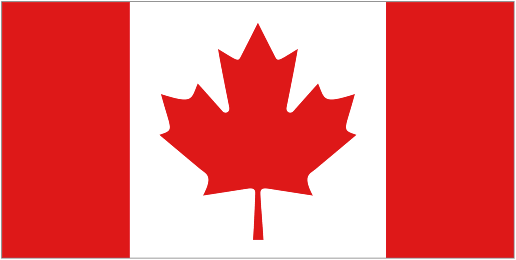
1927 - Peace Tower of Victory & Peace / Tour de la Victoire et de la Paix, Centre Block, Parliament Hill, Ottawa, Ontario (Canada). Usually called simply "The Peace Tower." Sits on the central axis of the Centre Block of the Canadian parliament buildings.


1932 - Peace Tower, Myron Taylor Hall, Law School, Cornell University, Ithaca, New York (USA). "Symbol of the post-World War I aspirations of Cornell's faculty – 'world peace through international law.'" Donated by Myron C. Taylor [1874-1959], Chairman of US Steel Corporation.

1936 - Palais des Nations / Palace of Nations, Geneva (Switzerland). Built for the League of Nations. Since the 1950s, it has served as the home of the UN Office at Geneva.



1937 - "Chaos, War or a New World Order," a pamphlet by American Lola Maverick Lloyd [1875-1944] & Hungarian Rosika Schwimmer [1877-1948] says, "The Federation of Nations must be a democratic league controlled by direct representation of the peoples and not by governments and bureaucracies." The main lines of this blueprint were drawn up in 1924, revised and published in 1937 and again in 1942. According to John Ewbank (see below), Lloyd and Schwimmer deserved the Nobel Peace Prize for this work.


April 8, 1943 - "One World" published by Wendle L. Wilkie [1892-1944]. "Documents Wilkie's world travels and meetings with many of the then-Allied heads of state as well as ordinary citizens and soldiers in locales such as El Alamein, Russia, and Iran. Willkie also discusses the need for some sort of World government."

1943-1968 - Dorothy Hewitt Hutchinson [l905-l984] began to gain influence in the peace movement when her pamphlet "A Call to Peace Now: A Message to the Society of Friends" was printed by the American Friends Service Committee (AFSC) in l943. That summer, Hutchinson and a small group of people started the Peace Now Movement, using her pamphlet to rally support for the principle of a negotiated settlement rather than unconditional surrender of the Axis powers. This group included George Wilfried Hartmann [1904-1955], a psychology professor at Columbia, & John Collett. Hutchinson also worked to promote the United Nations and helped organize a local chapter of the United World Federalists [UWF]. Hutchinson was active in the Women's International League for Peace & Freedom [WILPF] & became president of the US Section of WILPF in l96l, serving until l965. She then served as chairman of International WILPF from l965 until l968. Hutchinson was an activist in civil rights & civil liberties as well as in the peace movement.



July 1944 - Bretton Woods Monetary Conference, Mount Washington Hotel, Bretton Woods, New Hampshire (USA). Commemorates the 19-day international conference during which the groundwork was laid for the International Monetary Fund (IMF), the International Bank for Reconstruction & Development (IBRD) -- now called the World Bank -- and other so-called "Bretton Woods" institutions. "The Bretton Woods system collapsed in 1971." Date on which the historical marker was erected is unknown.





June 26, 1945 - Veterans Auditorium, War Memorial Veterans Building, San Francisco, California (USA). Signing of the United Nations Charter at the United Nations Conference on International Organization by 50 of the 51 original member countries. (Poland signed later). The UN Charter entered into force on October 24, 1945. The auditorium was renamed the Herbst Theatre in 1977.

1997 - Cordell Hull Birthplace & Museum State Park, 1300 Cordell Hull Memorial Drive, Byrdstown, Tennessee (USA). Preserves Hull's birthplace and personal effects which Hull donated to the citizens of Pickett County, including his 1945 Nobel Peace Prize. Cordell Hull [1871-1955] was Secretary of State 1933-1944. FDR called him "Father of the United Nations."



October 2, 1976 - "Europa-Union" plaque, near boat landing, Hertenstein on Lake Lucerne near Weggis (Switzerland). Final paragraph (in German): "May every visitor to Herteinstein dedicate himself to the idea of a united Europe." Partly hidden by bushes. Erected on 30th anniversry of the 1946 European federalist conference. The idea of a Union of European Federalists, and also the concept for a Swiss "Europapolitik" (the Herteinstein Programme) were born at the historic conference. Information from Prof. Peter van den Dungen 07Aug09.





About 1946 - Monument voor de Wereldvrede / Monument for World Peace, Utrechtseweg 183 (near Ziekenhuis De Lichtenberg / Lichtenberg Hospital, Amersfoort, Province of Utrecht (Netherlands). Moved after 1953 from garden of artist Jacob N. Nieweg [1877-1955], local chairman of "Kerk en Vrede / Church and Peace," who campaigned for "No More War." Three sided pyramid inscribed in Dutch ("Wereld Vrede door Federale Wereld Regering"), English ("World Peace by Federal World Government") & Esperanto ("Mond Paco per Federacia Mond Recistaro"). Monument has a sphere (globe?) on top & a four quadrant circle (earth symbol?) above each inscription. Compare the WFBN, UWF & Japanese logos below. On December 1, 2008, an article on page 3 of the Amersfoortse Courant described the monument's 80th anniversary [sic]. Images & information courtesy of Gerard Lössbroek. Click here for article by Jojanneke Clarijs.


Date? - Twee Monuments voor de Wereldvrede / Two Monuments for World Peace, Leusden, Province of Utrecht (Netherlands). Abour 3 km from Amersfoort. One is inscribed "World / peace / by / federal / world / government" (“Wereld / vrede / door / federale / wereld / regering”). The other is inscribed "Life is sacred. / Make it a safe." (“Het leven is heilig. / Maak het ook veilig.”) in Dutch, English & Esperanto. Acording to Jojanneke Clarijs, all three monuments were constructed by Hendrik van der Kraan AC [1888-c.1967], a member of the World Federalist Movement Netherlands (Wereld Federalisten Beweging Nederland) (WFBN) and the National Propaganda Foundation for World Federal Government (Nationale Stichting Propaganda voor Federale Wereldregering) (NSPFW) and publisher of the pacifist newspaper "Ban the war, Now!" ("Ban de oorlog uit, Nu!"). Photo & all information from article by Jojanneke Clarijs.

October 16, 1945 - Dublin, New Hampshire (USA). "Many civic American leaders issue the Declaration of Dublin which promotes a world federal government."

1947 - Five small world federalist organizations come together in Asheville, North Carolina (USA), and agree to merge as the United World Federalists (UWF). // "World Federalists from around the USA form the United World Federalists (UWF). This body is later reformed as the World Federalist Association (WFA)."
Banner has UWF logo

August 1947 - "In August 1947 in Montreux (Switzerland), more than 51 organizations from 24 countries came together at the Conference of the World Movement for World Federal Government and promulgated the Montreux Declaration." // "Some far-seeing men & women from many countries meet in Montreux (Switzerland), issue the Montreux Declaration & form the World Movement for World Federal Government. This global body is later renamed World Federalist Movement (WFM)." // Date & location of photo at left are uncertain.


1947 - "I first was exposed to and excited by the idea of world federation in 1947 when I was a high school debater & the national high school debate topic was "Resolved: That the United Nations should be converted into a Democratic World Federation." -Email from Ronald Glossop 2Apr12.

August 6, 1948 - World Federalist Movement of Japan (WFMJ), Dai-ichi Fujikawa Building 3F, 23, Yotsuya 4 chome, Shinjuku, Tokyo (Japan). "Formerly the United World Federalists of Japan. Founded in in commemoration of the third anniversary of the atomic bombing in Hiroshima. Dedicated to preventing further atrocities, WFM Japan has published two books on the history of world federalism in Japan. Has members throughout the country. Members collaborate regularly with other NGO's around the world."
Date? - "World Peace Through World Law," Port Island Bridge, Onohamacho, Chuo Ward, Kobe, Hyogo Prefecture (Japan). Cannot find any more information about this monument. GLOBES

1949 - Federal Union of European Nationalities (FUEN), Schiffbrücke 41, Flensburg (Germany). "An independent union of the organisations of national minorities in Europe, which was established in 1949 - at the time when the Council of Europe was set up in Versailles (France). Today (2009/10/02), the FUEN number 86 member organisations from 32 states."




1950 - United Nations Headquarters Building, East River, New York City, New York (USA). Cornerstone laid October 24, 1949. Replaced UN's termporary home (1946-1951) in the Sperry Gyroscope building in Lake Success, Long Island, New York (USA). See Apsel, Joyce (2008), "Peace & human rights education: The UN as a museum for peace," pp. 37-48, in Anzai, Ikuro, et al, ed. by (2008).



1952 - "Toward Freedom," Burlington, Vermont (USA). "A progressive perspective on world events, 'Toward Freedom' envisions a world ethic that honors the human spirit and the right of individuals to freedom of thought and creativity; advances movements for human rights, peace, justice, enlightenment, and freedom from oppression; and celebrates the contributions of the world's diverse cultures." Published by Robin Lloyd, granddaughter of Lola Maverick Lloyd [1875-1944] & daughter of William Bross Lloyd, Jr. [1908-1995].


1953 - American Freedom Association (AFA), Mt. Airy, North Carolina (USA) founded by Sam & Miriam Levering. "Has sponsored since 1953 an annual World Affairs Institute, which brings together specialists who address the international issues of our day. Originally held at Blue Ridge Assembly, Black Mountain, North Carolina."

1954 - Hiroshima (Japan) declares itself a "World Federalist City." "During the arduous process of financing and building their Peace [Memorial] Park, the survivors [Hibakusha] also created a World Federalist City committed to what they perceive to be a holy, essential, and interdependent trinity: world brotherhood, world peace, and nuclear disarmament." (Quote from "Folding paper cranes: An atomic memoir" (University of Utah Press, 2005) by Leonard Bird, a US Marine who was exposed to atomic radiation at the Nevada test site and who visited Hiroshima in the 1950's, 1980's and 1990's.)


1958 - "World Peace Through World Law" published by Louis B. Sohn [1914-2006] and Grenville Clark [1882-1967]. This book "examined proposals to transform the United Nations into a world government. It proposed a Revised United Nations Charter which would (1) allocate votes in the UN General Assembly based on member nations' populations, (2) replace the UN Security Council with an Executive Council with China, India, USSR, and the US as permanent members, and no veto power, (3) make a World Police Force the only military force permitted in the world."


1966 - Star Trek. "In our popular culture, Star Trek has been the prime vehicle to imagine a world government, don't you think?" (Email from Prof. Miriam (Merry) Levering, daughter of Sam & Miriam Levering .)

1974 - Southern Illinois University at Edwardsville (SIUE), Edwardsville, Illinois (USA). "In 1974, SIUE declared that it is a 'World University' -- a University which recognizes that it is a part not only of a state community & a national community but also of a global community (policy 1Q6). As an appropriate symbol of this declaration, the United Nations flag is flown on the main campus flagpole along with the US & Illinois State flags. The international students expressed what the United Nations flag means to them. 'Whether we are from Europe, Asia or the Middle East, even though we have differences through cultural, geographic & political backgrounds, we are building on our relationships here,' said Mohamed Chakir, a Fulbright scholar from Morocco." /// In 1974, the SIUE student world federalist organization which I founded managed to get the university to declare itself a world university which began to fly the UN flag at the center of campus along with the American flag & the flag of the State of Illinois. It is still flying there. It was about that time that I began to think of myself as a world citizen. At that time I also began teaching course on the 'Problem of War & Peace' & helped start a Peace Studies program." -- Email from Ronald Glossop 2Apr12.


October 30, 1974 - Tower of Peace, Greenbelt in front of Peace Memorial Museum (East Building), Hiroshima (Japan). Erected by the "Hiroshima Prefectural Committee for the Erection of a Tower to Commemorate [the 20th anniversary of] Hiroshima's Declaration of Itself as a World Federalist City." Note Japanese logo is identical to old UWF logo in USA. Five sides which symbolizing the five continents. Front is brown granite, the other four sides Grecian marble. Designed by Masami Kawamura. NB: Not shown in the Virtual E-Tour. Information courtesy of Michiko Yamane.




October 12-17, 1975 - 10-cent stamp commemorating "World Peace through Law" (USA). "A prelude to the Seventh World Law Conference of the World Peace Through Law Center (WPTLC), convening in Washington when more than 4,000 judges, lawyers, and law professors from more than 100 nations will meet in conference."
1978 - "It was in 1978 while working on the first edition of "Confronting War" (a problem-solving approach to the problem of war) as a text for [my] course on war & peace [at SIUE] that I began thinking like an Esperantist. As a result of brainstorming about all the things that would make war less likely, I noted that a world language would help greatly not only for communication but also for self-identity. Shortly after that I learned that Esperanto had already been developed, so I began learning it in 1980." -- Email from Ronald Glossop 2Apr12.


March 22, 1980 - Georgia Guidestones, Elbert County, Georgia (USA). aka "The American Stonehenge." Four giant granite stones engraved with 10 "Guides" or commandments in 8 different languages setting forth the basic principles of the establishment of the governance of a one world order with a unified world court of law where populations and reproduction are controlled, a unified "living new" language, whose philosophical foundation is built on "spirituality" & man’s environmental responsibility to live in harmony with nature. Built by "R.C. Christian" whose true identity remains unknown.


1982 - "Facing Reality: From World Federalism to the CIA" by Cord Meyer [1920-2001]. "This is, in effect, two books. The first is a fascinating autobiography tracing Cord Meyer's logical progression from badly wounded Marine Corps officer to fervent leader of the World Federalist movement after World War II to fervent CIA official & sophisticated cold warrior. The second book is a long and uninspired editorial on the menace of Russia's new 'geopolitical offensive.'"

December 10, 1982 - Law of the Sea Treaty (LOST), Montego Bay (Jamaica). According to John Ewbank, this treaty is "attributable almost entirely not to the organizations, but to three individuals, Sam Levering [1908-1993], Miriam Levering [1913-1991], and Dr. John J. Logue." Sam & Miriam owned and operated Levering Orchard in Ararat, Virginia (USA). Click here for "Sinister Secrets of the U.N. Sea Treaty." Map shows countries which have ratified (dark green), signed but not yet ratified (light green), & did not sign (gray).



1983 "Confronting War: An Examination of Humanity's Most Pressing Problem" by Ronald J. Grossop. "The updated & revised through 2000 edition of an immensely successful textbook reflects upheavals in the global geopolitical climate & examines why countries continue to build war arsenals in a time of relative peace. As an increasing number of countries gain nuclear capabilities & the number of intranational & regional conflicts grow, it becomes apparent that the end of the Cold War did not bring an end to the threat of war." // "The first edition of "Confronting War" was published in 1983 and the second in 1987. The publisher McFarland wanted a 3rd edition in 1992, but I asked for a delay because so much was changing at that time and persuaded them to publish "World Federation?" (1993) instead. Then the third edition of CW was published in 1994 & the 4th edition in 2001 just after I retired." -Email from Ronald Glossop 2Apr12.


After 1985 - "Schengen Agreement" monument, near Moselle bridge, Schengen (Luxembourg). "Three steel pillars, each with a star represent the first participant countries of the Schengen Agreement, being France, Germany & the Benelux countries, who met here in the triangle where the borders of Germany, France & Luxembourg meet... This is a treaty signed in 1985, on the river-boat "Princesse Marie-Astrid," providing for the removal of systematic border controls between the participating countries."






July 28, 1993 - "World Federation?: A Critical Analysis of Federal World Government" by Ronald J. Glossop. "The pros & cons of a democratic federal world government are carefully reasoned here, as are the basic concepts of such a federation, and the relationship of law & government. The author’s analysis brings one to the conclusion that a global federation is inevitable despite the many obstacles." // "I persuaded McFarland to publish "World Federation?" (1993) instead." -Email from Ronald Glossop 2Apr12.



July 3, 2000 - International Tribunal for the Law of the Sea, Elbchaussee, Nienstedten, Hamburg (Germany). "Provided at the expense of the Federal Government, including a substantial contribution from the City of Hamburg." Overlooks the river Elbe. According to John Ewbank, "this tribunal represents the principal achievement of world federalists over the past 70 years."




About 2001 - "A History of the World Government Movement" by John Ewbank on website of Home Rule Globally (HRG), Southampton, Pennsylvania (USA). NB: Full text copied below.



August 2, 2003 - Norman Cousins Monument, in front of Hiroshima Peace Memorial Museum, Hiroshima (Japan). Honors achievements of Norman Cousins [1915-1990], "including promotion of the moral adoption project for A-bomb & war orphans, his efforts in helping female A-bomb survivors receive keloid treatment in the US, & his continued appeal for elimination of nuclear weapons." Cousins was president of the World Federalist Association (WFA) and wrote "Who Speaks for Man?" in 1953. Left image by EWL. #53 of 56 "cenotaphs & monuments" on the Virtual E-Tour.



2004 - Passerelle des Deux Rives / Gateway of the Two Banks, across Rhine River between Strasbourg (France) & Kehl (Germany). "Permanent artistic installation, a bond between two countries for which the border formerly seemed & wanted to be insuperable. According to Roland Ries, then mayor of Strasbourg, 'Here, it is indeed Europe, because this bridge connects two countries that have been torn apart for a long time; the reconciliation of these two countries is today one of the surest supports of the European construction.'" Not to be confused with the Bridge of Europe which is a highway bridge a few hundred meters downstream (right image).




February 11, 2005 - "The Board of Directors of the World Federalists of Northern California, which a year before had incorporated as a public benefit educational organization in California, take on the new name of Democratic World Federalists (DWF)." "Our office is in San Francisco, the city where the finishing touches were put on the UN Charter in 1945, and where we hosted the XXIInd World Congress of the WFM in 1995. California is also the state where in 1949 United World Federalists of California, led by President Alan Cranston & Executive Director Robert Walker, convinced the State Legislature to pass the California Resolution, the first of several state resolutions calling for the USA to participate in a world federal government." Click here for Wikipedia page.


Date? - Speakers Corner, Hyde Park, London (England). Photographer's notes: "The man in my photograph is espousing the virtues of world federalism. The World Federalist Movement also has a website (with a logo that looks like that of the United Nations!) which says it is an international citizen's movement working for justice, peace, and sustainable prosperity. It says: 'We call for an end to the rule of force, through a world governed by law, based on strengthened and democratized world institutions. World federalists support the creation of democratic global structures accountable to the citizens of the world and call for the division of international authority among separate agencies.' Heavy stuff and high ideals!"









.jpg)